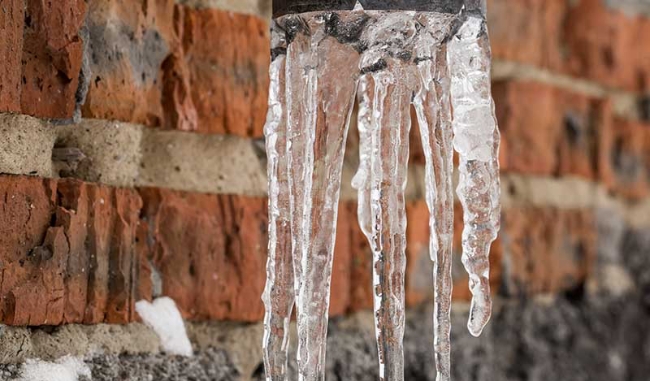We've discovered the article on How to prepare your home plumbing for winter weather down the page on the web and think it made good sense to quickly share it with you on this site.

Cold weather can wreak havoc on your pipes, particularly by freezing pipelines. Below's exactly how to prevent it from happening and what to do if it does.
Intro
As temperatures decline, the danger of frozen pipelines boosts, possibly bring about costly repairs and water damage. Comprehending how to prevent frozen pipes is important for house owners in cool environments.
Comprehending Icy Pipes
What triggers pipes to ice up?
Pipelines ice up when subjected to temperature levels below 32 ° F (0 ° C) for extended durations. As water inside the pipelines ices up, it broadens, taxing the pipe wall surfaces and possibly creating them to rupture.
Threats and damages
Icy pipes can bring about water disturbances, building damages, and pricey repairs. Burst pipelines can flooding homes and create extensive structural damage.
Indications of Frozen Water Lines
Recognizing icy pipelines early can prevent them from bursting.
Exactly how to determine frozen pipes
Search for decreased water flow from faucets, unusual smells or noises from pipelines, and noticeable frost on subjected pipes.
Prevention Tips
Insulating vulnerable pipelines
Cover pipes in insulation sleeves or use warm tape to safeguard them from freezing temperatures. Concentrate on pipes in unheated or exterior locations of the home.
Home heating techniques
Maintain interior spaces adequately warmed, particularly areas with plumbing. Open up cabinet doors to permit warm air to flow around pipes under sinks.
Shielding Outside Pipes
Garden tubes and outside faucets
Detach and drain garden tubes before wintertime. Install frost-proof spigots or cover exterior faucets with protected caps.
What to Do If Your Pipelines Freeze
Immediate actions to take
If you believe frozen pipes, maintain taps open up to soothe stress as the ice melts. Utilize a hairdryer or towels soaked in hot water to thaw pipes gradually.
Long-Term Solutions
Structural modifications
Take into consideration rerouting pipelines far from exterior walls or unheated areas. Add extra insulation to attics, cellars, and crawl spaces.
Updating insulation
Buy high-quality insulation for pipes, attic rooms, and wall surfaces. Correct insulation aids keep regular temperature levels and minimizes the danger of icy pipelines.
Final thought
Avoiding frozen pipelines calls for positive steps and quick feedbacks. By recognizing the causes, signs, and safety nets, home owners can secure their plumbing throughout winter.
6 Proven Ways to Prevent Frozen Pipes and Protect Your Home
Disconnect and Drain Garden Hoses
Before winter arrives, start by disconnecting your garden hoses and draining any remaining water. Close the shut-off valves that supply outdoor hose bibs and leave the outdoor faucet open to allow any residual water to drain. For extra protection, consider using faucet covers throughout the colder months. It’s also important to drain water from any sprinkler supply lines following the manufacturer’s directions.
Insulate Exposed Pipes
Insulating your pipes is an effective way to prevent freezing. Pipe insulation is readily available at home improvement stores and is relatively inexpensive. Pay close attention to pipes in unheated areas such as the attic, basement, crawl spaces, or garage. Apply foam insulation generously to create a buffer against the cold. You can also wrap your pipes in heat tape or thermostat-controlled heat cables for added warmth.
Seal Air Leaks
Inspect your home for any cracks or openings that could let in cold air. Seal any holes around the piping in interior or exterior walls, as well as the sill plates where your home rests on its foundation. Additionally, make sure to keep your garage door closed unless you’re entering or exiting. Leaving it open creates a significant air leak that can lead to frozen pipes.
Allow Warm Air Circulation
During cold snaps, it’s essential to allow warm air to circulate evenly throughout your home. Leave interior doors ajar to promote better airflow. Open kitchen and bathroom cabinets to help distribute heat consistently around the rooms. If you have small children or pets, be sure to remove any household chemicals or potentially harmful cleaners from open cabinets for safety.
Let Faucets Drip
A small trickle of water can make a big difference in preventing ice formation inside your pipes. When temperatures drop significantly, start a drip of water from all faucets served by exposed pipes. This continuous flow helps prevent the water from freezing. Additionally, running a few faucets slightly can relieve pressure inside the pipes, reducing the chances of a rupture if the water inside does freeze.
https://choateshvac.com/6-proven-ways-to-prevent-frozen-pipes-and-protect-your-home/

As a devoted reader about Winter Plumbing Precautions: Preventing Frozen Pipes, I imagined sharing that post was important. Enjoyed reading our post? Please share it. Help someone else find it. We value your readership.
Order Repair